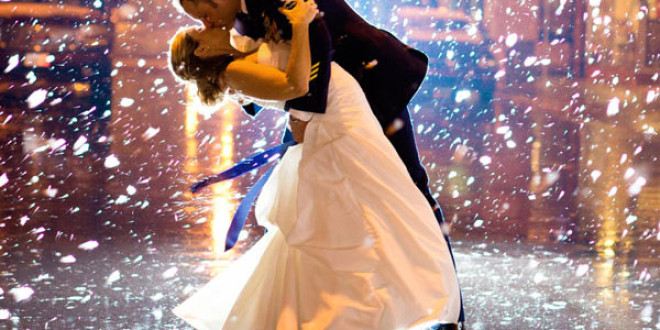[ad_1]
Shopping for a wedding gown can be very intimidating. After all, it is not every day that you spend thousands of dollars on one dress. Or have to find a garment to live up to a lifelong fantasy… or one that will make your groom swoon at the altar…and that will take your guests’ breath away…are you getting nervous yet? Well, don’t be. To take some of the mystery out of bridal gowns, here is a glossary of some of the fabrics you will encounter:
Duchess satin, peau de soie, or silk satin: these terms are often used interchangeably. They are all silk fabrics woven to have a sheen on one side. This is a very luxurious fabric, and it is frequently used to create formal ballgowns. You would accessorize a silk satin gown with very elaborate wedding jewelry.
Italian satin: this is likely a silk blend, or a synthetic trying to sound more expensive than it is. It will also have a sheen like silk satin, but the drape will be stiffer. If a gown is labeled as satin, without the word silk, then assume it is a synthetic like polyester. (Be forewarned: polyester does not breathe like a natural fiber – it is hot!) The price tag will also give you a hint – it is very difficult to find a silk bridal gown for under $1000.
Crepe: a pebbly-textured fabric with a matte finish. Crepe is loved for its’ fluid drape, and works best in slim silhouettes. Available in silk or synthetic.
Organza: a crisp plain weave fabric that is translucent. Organza is a very popular material as an overlayer for summer gowns. It is also created from silk or polyester.
Chiffon: another translucent fabric, but it has a soft drape instead of the crisp hand of organza. Like organza, chiffon is considered a summer-weight fabric.
Linen: a natural fiber woven from flax, linen is definitely reserved for summer. It starts out crisp, but will quickly acquire the “relaxed” (a.k.a. wrinkled) look that linen is known for. Linen is a great choice for an informal wedding gown, and would be lovely dressed up with simple pearl wedding jewelry.
Silk mikado: a twill weave fabric with a fairly stiff hand, mikado is a wonderful choice for modern, architectural gowns. It is less shiny than satin, and less matte than crepe. Mikado also wrinkles less than silk satin.
Silk shantung and silk dupioni: these two fabrics are best known for their slubby texture. Shantung is lighter weight than dupioni, and has less pronounced slubs. Both work well for structured gowns, but shantung can also be draped on the bias for a much softer effect. They have a minimal sheen.
Taffeta: a crisp fabric without shine. Silk taffeta can be used to create full, but lightweight gowns. It is also loved (or hated) for its’ characteristic rustling sound.
These are just a few of the special fabrics that designers use to create bridal gowns. More unusual choices include English net, silk piqué, and velvet. Your gown may also be embellished with various laces, ribbons, and trims. With so many amazing fabrics available, every bride is sure to find a wedding gown that feels like it was made just for her.
[ad_2]
Source by Bridget Mora

